NAIROBI, Kenya — On the morning Sudan’s rival military
forces began fighting, Yasir Algrai was in his studio in the center of the
country’s capital, prepping for another day of work surrounded by paint colors
and canvases.
اضافة اعلان
That was April 15 — and in the three days that followed,
Algrai remained trapped in his studio, starving, and dehydrated as battles
raged outside his door on the streets of Khartoum.
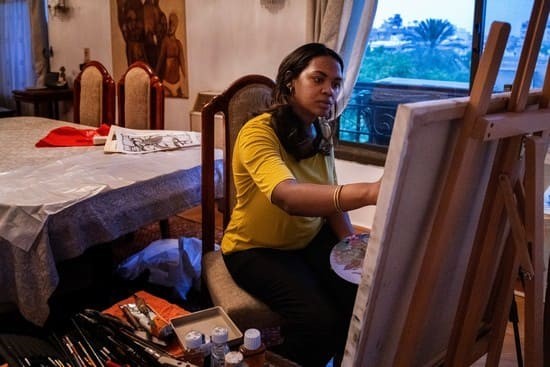 Dahlia Abdelilah
Baasher, a Sudanese artist, paints at her new home in Cairo, on May 10, 2023.
Dahlia Abdelilah
Baasher, a Sudanese artist, paints at her new home in Cairo, on May 10, 2023.
For hours every day, he cowered in terror as bullets pierced
the windows of the building and the walls shook from errant shelling. When a
small period of quiet to escape materialized, Algrai was eager to seize it —
albeit with a heavy heart.
“I could not carry any of my art or personal belongings,”
said Algrai, 29, who got out, but left behind his favorite guitar and more than
300 paintings of different sizes. “This conflict has robbed us of our art and
our peace, and we are now left trying to stay sane in the midst of displacement
and death.”
Algrai is among dozens of Sudanese artists and curators who
have fled their studios and galleries as two warring generals lay waste to one
of Africa’s largest and most geopolitically important nations.
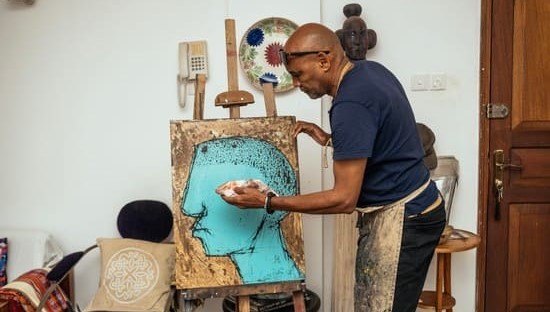 Eltayeb Dawelbait, a
Sudanese artist, at his home and studio in Nairobi, Kenya, on May 12, 2023.
Eltayeb Dawelbait, a
Sudanese artist, at his home and studio in Nairobi, Kenya, on May 12, 2023.
The conflict, pitting the Sudanese army controlled by Gen.
Abdel-Fattah Burhan and the paramilitary Rapid Support Forces led by Lt. Gen.
Mohammed Hamdan Dagalo, has killed hundreds, displaced over 1 million people,
and left more than half the country’s population in need of urgent humanitarian
assistance.
Amid the freewheeling violence, many fear that the war will
devastate the city’s burgeoning art scene, propelled primarily by young artists
who emerged from the 2019 pro-democracy revolution and who were beginning to
gain regional and global attention.
A dozen Sudanese artists and curators in Sudan, Egypt, and
Kenya told The New York Times that they had no idea about the fate of their
homes, studios or gallery spaces, which cumulatively housed artworks worth
hundreds of thousands of dollars.
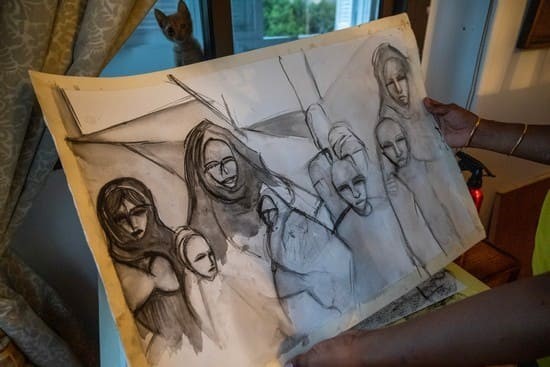 Artwork by Dahlia
Abdelilah Baasher, a Sudanese artist, at her new home in Cairo, on May 10,
2023.
Artwork by Dahlia
Abdelilah Baasher, a Sudanese artist, at her new home in Cairo, on May 10,
2023.
“The artistic, creative ecosystem is going to be broken for
a while,” said Azza Satti, a Sudanese art curator and filmmaker. Artists, she
said, “saw the people’s need to express themselves, to feel alive, to feel
recognized,” adding that the war was gradually leading to “the erasure of that
voice, that identity.”
Some of the fiercest fighting in the capital has unfolded in
neighborhoods like Khartoum 2, where the city’s newest art galleries are based,
or bustling districts like Souk al-Arabi, where Algrai kept his studio.
Robberies and looting are rampant in those areas, with residents blaming the
paramilitary forces who have steadily tightened their grip on the capital.
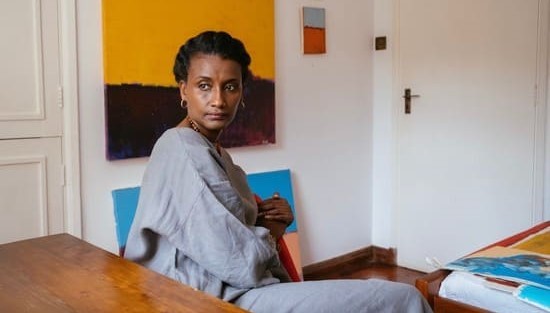 Rahiem Shadad, the
co-founder of the Downtown Gallery in Khartoum, at his studio in Cairo, on May
10, 2023.
Rahiem Shadad, the
co-founder of the Downtown Gallery in Khartoum, at his studio in Cairo, on May
10, 2023.
With museums and historical buildings attacked and damaged
in the fighting, many are also concerned about the pillaging of the country’s
artistic riches and archaeological sites.
The Sudan Natural History Museum and archives at the
Omdurman Ahlia University have both suffered significant damage or looting, the
UN Educational, Scientific and Cultural Organization said in a statement.
“Inside the war, the physical war, there’s another war for
art,” said Eltayeb Dawelbait, a veteran Sudanese artist who is based in
Nairobi. Dawelbait has several pieces in Sudanese galleries and said he feared
Sudan’s artistic and cultural institutions would be pilfered much like what
happened in Iraq two decades ago.
“The artwork needs to be protected,” he said.
After the country’s 1956 independence from the United
Kingdom and Egypt, Sudan had a bustling art scene that produced renowned
artists, including Ahmed Shibrain, Ibrahim El-Salahi and Kamala Ibrahim Ishag.
But in the three decades that the dictator Omar al-Bashir held power, he used
censorship, religious decrees, and imprisonment to limit creative expression,
forcing many artists and musicians to flee the country.
That began to shift during the 2019 revolution, when young
artists poured into the streets to paint murals on walls and roads and call for
democratic rule. When al-Bashir was eventually removed from power in April of
that year, artists reveled in their newfound freedoms and began painting and
sculpting to capture life in post-revolution Sudan.
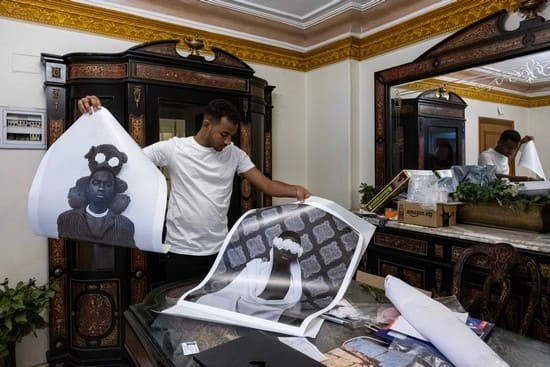 Azza Satti, a
Sudanese curator and filmmaker, at her home in Nairobi, Kenya, on May 12, 2023.
Azza Satti, a
Sudanese curator and filmmaker, at her home in Nairobi, Kenya, on May 12, 2023.
Among them was Dahlia Abdelilah Baasher, a 32-year-old
self-taught artist who quit her job as an art teacher after the revolution in
order to work full-time on her art. Baasher’s figurative paintings examine the
repression that women face in Sudanese society, and over the years, her pieces
have attracted the attention of curators and art custodians from Sudan, Egypt,
Kenya and the United States.
Days before Sudan’s war broke out in April, she and her
family went to Egypt for the last days of the holy month of Ramadan and the
following Eid holiday. Baasher packed several small paintings for the trip with
the hope of selling them, but left more than two dozen large canvases at home.
“I cannot put into words or onto a canvas how I feel about
this war,” Baasher said in a video interview from Cairo. With her apartment
building and neighborhood in Khartoum deserted, she said she didn’t know the
fate of any of her belongings.
“We are all just shocked and traumatized,” she said. “We
never imagined this would happen and that we would lose the art movement we
have been building.”
Her pain was shared by Rahiem Shadad, who in the heady,
post-revolution days co-founded The Downtown Gallery in Khartoum.
Shadad, 27, works with more than 60 artists across Sudan,
and was planning a solo show in Khartoum for Waleed Mohamed, a 23-year-old
painter. Shadad had also just finished curating and shipping artworks for an
exhibition scheduled to travel abroad titled “Disturbance in The Nile.” The
show, which starts in late June, will tour Lisbon, Madrid and Paris and feature
Sudanese artists from various generations.
For many artists, the conflict has also denied them access
to their source of inspiration.
Khalid Abdel Rahman, whose work depicts landscapes of
Khartoum neighborhoods and Sufi tombs, fled his studio in Khartoum 3 without
his paintings and says he’s been thinking about how the conflict will affect
his vision and future creations.
“I can’t figure it out now,” he said. “I’m really sad about
this.”
But amid the death and displacement that has enveloped
Sudan, artists say this is another period in the nation’s history that they
will have to document one way or another.
“This is an era that we must carefully study so that we can
pass it on to future generations and introduce them to what happened to the
country,” said Algrai, who is staying in a village east of Khartoum.
“The passion will never die.”
Read more Culture and Arts
Jordan News



